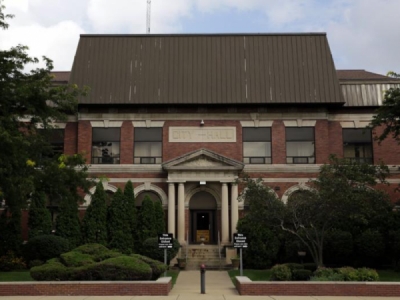
Posted on May 22, 2019
EAST CHICAGO — The harbor dredging project will resume in mid-June, officials said at the annual pre-dredging public meeting.
This latest dredge cycle will involve the removal of approximately 175,000 cubic yards of sediment.
According to the U.S. Army Corps of Engineers, over the next few years, the entire federal channel will be dredged to federally authorized navigation depths, including the removal of sediments in adjacent berthing and docking areas.
Mike Nguyen, project manager from the Army Corps, said from the start of the dredging project in 2012 through fall 2018, 1.41 million cubic yards of sediment have been removed.
By contract, Nguyen said, 2019 dredging will remove 155,000 cubic yards of sediment in the federal channel and another 20,000 cubic yards in private dredging.
The contract, Nguyen added, also calls for environmental monitoring, site maintenance, operation of a gradient control system, and pond water transfer from the confined deposit facility (CDF), where the sediment is contained.
Dredging contractors are Kokosing Construction Co. from Ohio and Illinois-based O’Brien and Gere. Their five-year contract runs through 2021. The local sponsor is the East Chicago Waterway Management District, which hosted the recent pre-dredging meeting.
Beth Weber, quality control manager on the project from Kokosing, explained her company does mechanical dredging using an environmental clamshell bucket. To move sediment to the CDF, Kokosing uses hydraulic off-loading using water recirculated from the CDF. No additional water is required, Weber said.
Kokosing will be working six to seven days a week, 24 hours a day, Weber said. She estimated that 2019 dredging would take about three months to complete.
The navigation project consists of a harbor channel ranging in depth from 27 to 29 feet low-water datum and two canals with depths of 22 feet.
Besides reducing contaminants that have previously washed into Lake Michigan, the dredging project is designed to improve efficiency of deep-draft commercial navigation.
The amount of sediment being removed varies by site, Nguyen explained. Dredging factors, he said, include overall depth of the area and the types of vessels using the channel and their cargo.
Ben O’Neil, an environmental engineer with the Army Corps, said materials being dredged from the waterway are consistent with industrialization. These include heavy metals, petroleum products and PCB, or polychlorinated biphenyl, an organic chlorine compound once used as a coolant fluid. Banned in the U.S. since 1979, PCB has been found to be harmful to humans and animal life.
Nguyen reported low levels of PCB found along the harbor channel. He added that the Army Corps and contractors have been in contact with the Indiana Department of Environmental Management and the U.S. Environmental Protection Agency to “ensure everyone is meeting the requirements before dredging.”
O’Neil also said EPA tested for PCB last year. The Army Corps does sediment testing, O’Neil said, “as needed.”
“We’ve done extensive sampling,” Nguyen said. “The sediment is not moving.”
Source: nwitimes.com





